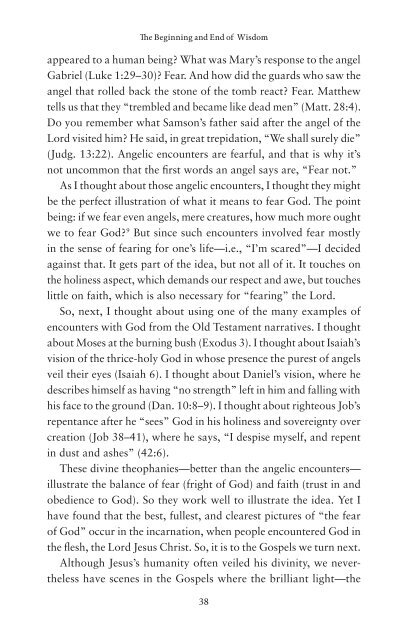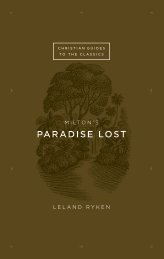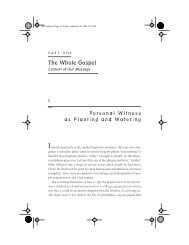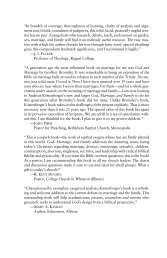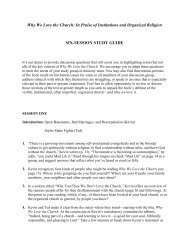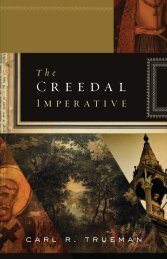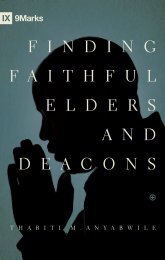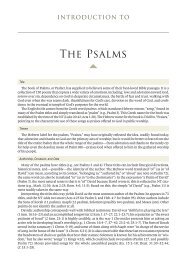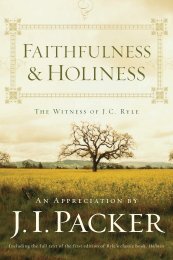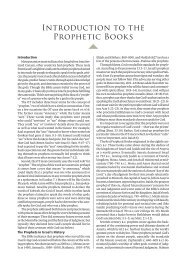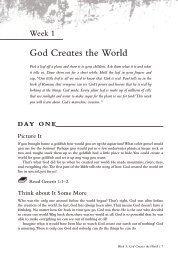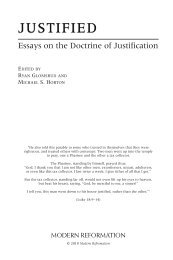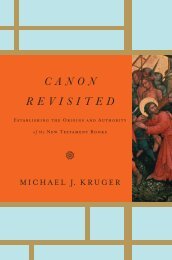The Beginning and End of Wisdom - Monergism Books
The Beginning and End of Wisdom - Monergism Books
The Beginning and End of Wisdom - Monergism Books
- No tags were found...
Create successful ePaper yourself
Turn your PDF publications into a flip-book with our unique Google optimized e-Paper software.
<strong>The</strong> <strong>Beginning</strong> <strong>and</strong> <strong>End</strong> <strong>of</strong> <strong>Wisdom</strong>appeared to a human being? What was Mary’s response to the angelGabriel (Luke 1:29–30)? Fear. And how did the guards who saw theangel that rolled back the stone <strong>of</strong> the tomb react? Fear. Matthewtells us that they “trembled <strong>and</strong> became like dead men” (Matt. 28:4).Do you remember what Samson’s father said after the angel <strong>of</strong> theLord visited him? He said, in great trepidation, “We shall surely die”(Judg. 13:22). Angelic encounters are fearful, <strong>and</strong> that is why it’snot uncommon that the first words an angel says are, “Fear not.”As I thought about those angelic encounters, I thought they mightbe the perfect illustration <strong>of</strong> what it means to fear God. <strong>The</strong> pointbeing: if we fear even angels, mere creatures, how much more oughtwe to fear God? 9 But since such encounters involved fear mostlyin the sense <strong>of</strong> fearing for one’s life—i.e., “I’m scared”—I decidedagainst that. It gets part <strong>of</strong> the idea, but not all <strong>of</strong> it. It touches onthe holiness aspect, which dem<strong>and</strong>s our respect <strong>and</strong> awe, but toucheslittle on faith, which is also necessary for “fearing” the Lord.So, next, I thought about using one <strong>of</strong> the many examples <strong>of</strong>encounters with God from the Old Testament narratives. I thoughtabout Moses at the burning bush (Exodus 3). I thought about Isaiah’svision <strong>of</strong> the thrice-holy God in whose presence the purest <strong>of</strong> angelsveil their eyes (Isaiah 6). I thought about Daniel’s vision, where hedescribes himself as having “no strength” left in him <strong>and</strong> falling withhis face to the ground (Dan. 10:8–9). I thought about righteous Job’srepentance after he “sees” God in his holiness <strong>and</strong> sovereignty overcreation (Job 38–41), where he says, “I despise myself, <strong>and</strong> repentin dust <strong>and</strong> ashes” (42:6).<strong>The</strong>se divine theophanies—better than the angelic encounters—illustrate the balance <strong>of</strong> fear (fright <strong>of</strong> God) <strong>and</strong> faith (trust in <strong>and</strong>obedience to God). So they work well to illustrate the idea. Yet Ihave found that the best, fullest, <strong>and</strong> clearest pictures <strong>of</strong> “the fear<strong>of</strong> God” occur in the incarnation, when people encountered God inthe flesh, the Lord Jesus Christ. So, it is to the Gospels we turn next.Although Jesus’s humanity <strong>of</strong>ten veiled his divinity, we neverthelesshave scenes in the Gospels where the brilliant light—the38


